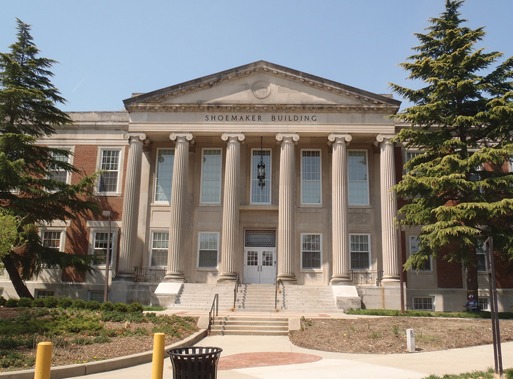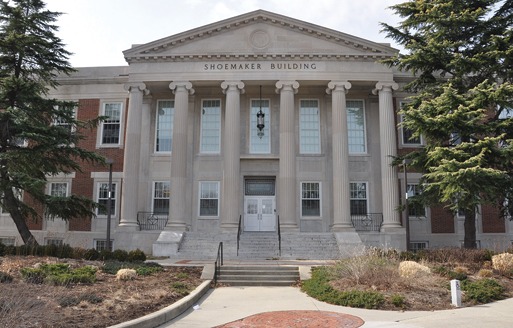Case Study: Rehabs and Restorations
University of Maryland’s Shoemaker Hall

In 2009, The University of Maryland maintenance team was faced with campuswide preservation issues. One building in particular, Shoemaker Hall, was in need of a full restoration.
Built in 1932, Shoemaker Hall had fallen prey to general neglect, natural soiling from the elements and unfavorable repair methods.
Solution
After assessing the scope of the project, specific issues were identified as damage from spalling; improper patching and tarring of joints; rust jacking; and previous application of incompatible products. Exposure to the elements spawned dirt and carbon buildup as well as patina staining from copper.
A key point of importance for The University of Maryland was to complete the restoration, but leave the building looking 82 years old. Head of maintenance Butch Boswell and his team researched brands and products for compatibility. A continual issue they encountered was that materials were not compatible with the substrates to which they were applied for repairs. This resulted in failures, damage of original substrates, and spalling.
In moving forward with the restoration, Cathedral Stone products were applied to the entire building. Cleaners included Masonre G (granite, cement), B (limestone), and B+ (multi-purpose heavy duty). As with all Cathedral Stone products, the cleaners are environmentally safe.
During the repair process, all mortars, including pointing mortars, were customized in Cathedral Stone’s onsite lab to match composition and color. Mortars included Jahn M160 (granite, bluestone), Jahn M70 (limestone) and Jahn M110. Jahn M110 is pointing mortar designed to have a lower compressive strength than the surrounding masonry. This quality allows it to absorb the stress of natural expansion, rather than transfer it to surrounding masonry, thereby preventing failures.
No Cathedral Stone mortar contains bonding agents such as latex, acrylic bonding agents or other additives. When repair materials contain these agents, a waterproof barrier forms at the back of the repair. The water and salts that naturally pass through the substrate become trapped.
Freeze/thaw cycles and buildup of salt crystallization begin to push out the repaired area, thus compromising the integrity and, often times, damaging the surrounding substrate. Due to the aforementioned, The University of Maryland has experienced success with Cathedral Stone Products.
“We have used everything in the Cathedral Stone Product line,” says Boswell. “After using the products on over 300 buildings across campus, we are just overwhelmed with success of the outcome. Time and again tested, and time proved.”
With the approach of collaboration between science and masonry, no failures have occurred. The University of Maryland has maintained the integrity of the campus, while reducing costs with a long-lasting solution.
